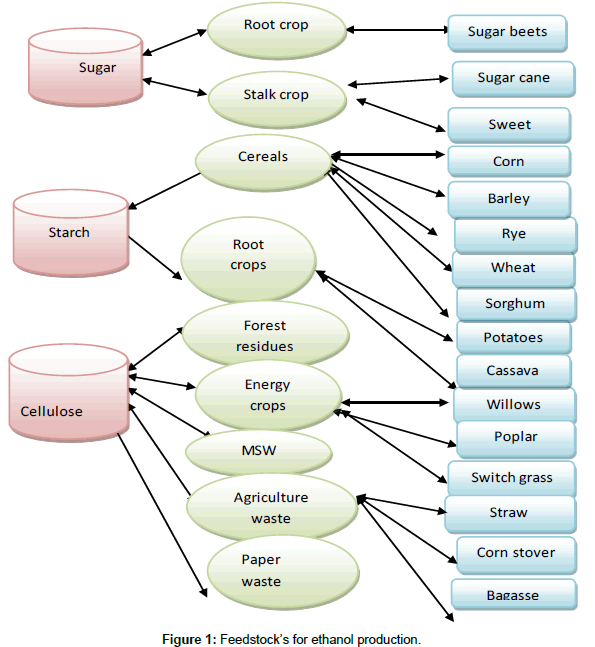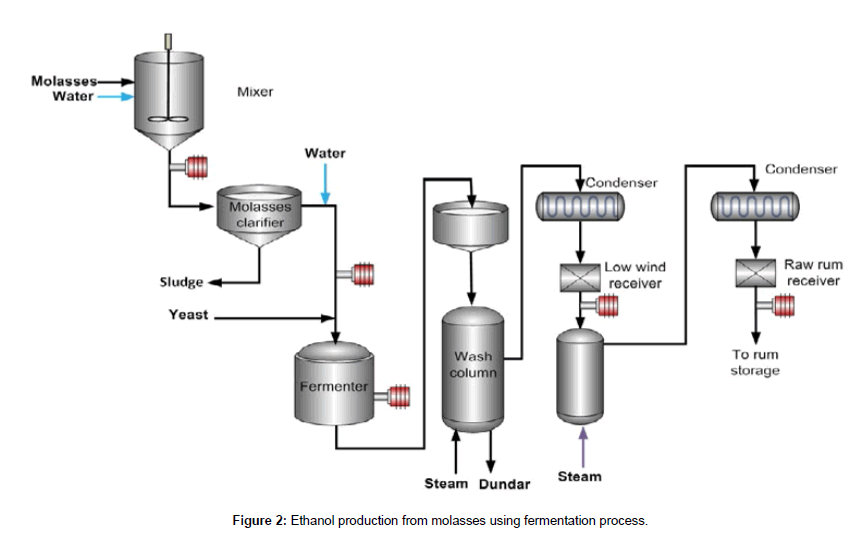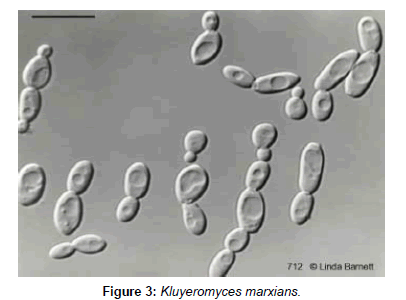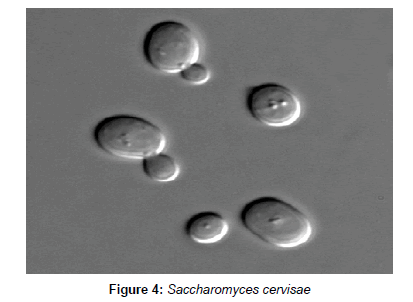Review Article Open Access
Modeling of Ethanol Production from Molasses: A Review
Department of Chemical Engineering, Mehran University of Engineering and Technology, Jamshoro, Pakistan
- *Corresponding Author:
- Anand Parkash
Department of Chemical Engineering
Mehran University of Engineering and Technology
Jamshoro, Pakistan
Tel: 0333-796-2266
E-mail: parwani_anand@yahoo.com
Received date: October 13, 2015; Accepted date: October 24, 2015; Published date: October 30, 2015
Citation: Parkash A (2015) Modeling of Ethanol Production from Molasses: A Review. Ind Chem Open Access 3:108. doi: 10.4172/2469-9764.1000108
Copyright: © 2015 Parkash A. This is an open-access article distributed under the terms of the Creative Commons Attribution License, which permits unrestricted use, distribution, and reproduction in any medium, provided the original author and source are credited.
Visit for more related articles at Industrial Chemistry
Abstract
The rapid depletion of coal, gas and crude oil reservoir enforced the study of alternative fuel such types are biofuels, bioethanol. Ethanol can be used as a pure fuel or blended with gasoline used for vehicles. Ethanol can be produced from various sources. Sugarcane getting tremendous attention recent years due to its availability and utilization for production of ethanol, because the amount of sugar present in this high, due to high sugar content it can be utilized for fermentation and other process. Some plants containing cellulosic material those can be utilized for ethanol production. There are various plants that can be utilized for the production of ethanol.
Keywords
Modeling; Ethanol; Molasses
Introduction
Ethanol production from molasses is not new, but some areas are to be researched to increase fully awareness. In Pakistan 22 distilleries were operating using molasses for ethanol production, there is need to be increase the number of distillery plant in order to utilize molasses fully and get benefit from that. Numerical simulations give the opportunity to utilize the process in a proper manner, because in this we can calculate any parameter or optimize without any pilot plant [1,2]. Numerical methods are available to carry out numerical simulation. Matlab software has many applications regarding to solve any differential equation, ethanol production from molasses has getting attention regarding its usage and other type of application to overcome the problem of energy crises [3]. Zymomonas mobilis used for ethanol production. Zymomonas mobilis has many favorable conditions regarding its utilization. Zymomonas mobilis give maximum production of ethanol compared to other yeast like Saccharomyces cerevisiae and klueromyces marxianus, some researcher still working to get more other yeast for production of ethanol [4,5]. A cell reactor (ICR) under study to carry out the fermentation process using molasses as substrate and yeast Saccharomyces cerevisiae were under investigation. He used packed bed of immobilized cell for fermentation process. The works were carryout by using Saccharomyces cerevisiae to enhance the productivity of immobilized cells. The fermentation of ethanol was carried using 24 hr for growth to carry out the fermentation process. Ethanol fermentation model were proposed by him to carry out the fermentation process of ethanol [6,7]. Zymomonas mobilis as a yeast for process of Fermentations to convert the sugars into alcohol different cultures of Zymomonas mobilis were analyzed under this study. The conditions that increase ethanol production were given by this researcher temperature of 30°C and static culture and time of fermentation of 48 h, achieving 55.8 g L-1 it shows that Zymomonas mobilis has getting attention now days due to its availability and getting part of research in the area of biotechnology [7,8]. Preliminary tests carried out in glucose (50 g/L) fermentation medium showed that high enzyme amounts (2.5–3.5 FPU/mL) could cause a negative effect on K. marxianus growth rate and viable cells number. However, the maximum ethanol production was not affected and about 86% of the theoretical (22 g/L) was reached in all cases independently of the enzyme dosage. In SSF experiments, cell viability was always affected by enzyme loading [9,10]. Nevertheless, slight differences observed on cell viability during glucose fermentation processes with the detected concentrations of the additives did not justify the negative effect observed in SSF experiments. To produce ethanol from final sugar cane molasses and to evaluate its quality. Urea was used as nitrogen source and added at different concentrations 0.15%, 0.5%, and 0.25% (w/v) to the molasses mash. Experiments were conducted using four treatments depending upon molasses sugar concentration which was calculated as percentages 10, 15, 20 and 25(w/v). The pH of the mash was adjusted to 4.8 using concentrated sulphuric acid. 5% (w/v) baker’s yeast was added. The fermentation was conducted for 72 hours at 33°C. The microbiological analysis revealed absence of bacteria, yeasts and moulds in dilutions 10-3, 10-4, 10-5 of molasses samples. The yield of ethanol obtained was 20 ml per 100 g of molasses, and ethanol with 96% purity could be obtained when the main medium of production (molasses) includes 0.25% (w/v) urea and 20% (w/v) sugar concentration [11,12]. Zymomonas mobilis using soybean molasses as substrate for ethanol production under controlled conditions. Ethanol now days getting interested due to friendly effects on environment, different yeasts were under investigation for ethanol production from molasses. Soybean molasses as substrate in this study. The conditions that were used to maximize ethanol production from soybean molasses were 200 g L-1 of soluble solids, pH between 6.0 and 7.0, in this work Saccharomyces cervsisea were also tested to see the behavior that on ethanol production [13,14]. Baggase and trash after getting juice from sugar cane the material were obtained to use it in proper way co-generation of baggase and trash elements were carried out the researcher also studied different lignocelluloses material for ethanol production different parameter for ethanol production were under study to carry out process of ethanol. There are also different feedstock’s available for ethanol production. But as for lignocelluloses material is concerned give maximum ethanol production regarding other source for ethanol production [10].
Ethanol production from molasses using different yeast
Saccharomyces servisae utilized as yeast for ethanol production using microprocessor controlled fermenter, the maximum ethanol production using Saccharomyces servisae as yeast The maximum specific ethanol production rate qp=2.82 g L-1 h-1 and Yp/s=0.49 g/g respectively. The activation energy were determined for cell growth (Ea=20.8 kJ/mol) and death (Ed=19.1 kJ/mol) and product formation and inactivation (EP=35.8 kJ/mol and Edp=33.5 kJ/mol) revealed the thermo-stable of the organism for up to 47°C [15,16]. The ethanol production from molasses. To enhance the production of ethanol different parameter were under study to optimize the parameter to give maximum ethanol production. The optimized conditions that were obtained using: Temp=40°C, pH=5.5, carbon source (molasses=15% sugar) nitrogen source (ammonium sulphate 0.75%), 300 RPM stirring speed and oxygen flow rate was 0.1 vvm/l. In this study kluyeromyces marxianus under study for ethanol production, it is observed that kluyeromyces marxianus has advantages regarding maximum production of ethanol under microprocessor control fermenter. Different biological process and source for production of ethanol uses different process. He did also work on the different depolymerization of cellulosic material for converting into ethanol. He did also work on recombinant bacteria that were produced from different workable environment [17,18].
Simulation of ethanol production from molasses
Simulation is technique in which we solve many mathematical models into simulation by using different software package. Simulation has many advantages regarding money saving, time saving regarding huge experiment conducted in the laboratory or using any pilot plant [15]. Different models using Matlab software. In this research Saccharomyces servisae were used to carry out the numerical simulation by using eleven models, he suggest that Monod and Hinswoold model give the good results against fermentation process for ethanol production [12]. A mathematical model of direct ethanol production from molasses in immobilized yeast culture. He also developed the model that will predict the dynamic behavior of cell growth, starch degradation and some other process. He compared the model and experimental results for ethanol production [9]. The mathematical model to predict the temperature effect on ethanol production. Saccharomyces cerevisiae were under study during his research. Because as we know that in mainly different country for ethanol production Saccharomyces cerevisiae were used to carry out the fermentation process using molasses as substrate. Due to this reason he developed the mathematical model for temperature effect on ethanol production due to different region of the world. Different temperature occurs so that’s why temperature has important parameter for ethanol production [20]. Phenomenological and empirical nonlinear models were built for describing experimental data of Kluyveromyces cicerisporus batch fermentation on whey, at different temperature and pH levels. The phenomenological model is based on cell death; substrate consumption due to product formation, cell growth and maintenance; substrate/product inhibition and growth-associated/ non growth associated product formation. The parameters estimation of the phenomenological model was carried out using the maximum likelihood estimation method. The empirical nonlinear neural network model identification employed traditional and the dynamic simulation analysis as the validation procedures [11]. The ethanol production improvement is important task to improve its production. It is really thankful that we have to work on different tool to optimize the production of ethanol. There are various numerical technique or we can say that different software were available to do work on different process engineering software to optimize different parameter to increase the production of ethanol from molasses. Some researchers also working on different model to improve the production because if we increase the production of ethanol from molasses, there is chance to overcome the problem of energy crises [19,20]. The simulation on superpose software for an automatic sugarcane industry to work on ethanol production. He did also work on the improvement on cost of ethanol. He also predicts the costs of ethanol production from molasses. Because due to energy crises facing world today’s scenario. There is need to explore the technique which will improve the cost of ethanol production, because as chemical engineer is concerned that should be economically [17,18].
Ethanol
Ethanol production occurs from various biological feed stocks which contain appreciable amount of sugar. Ethanol can be produced from various sources such are like sugary, starchy and cellulosic material. Ethanol production higher from two feed stocks material which are sugar cane and sugar beet, because these contain high percentage of sugar and starch are today’s feed stocks of ethanol production called first generation feed stocks, because in feed stocks only we are using (starch, sugar, oil) parts of plant. Next generation for ethanol feed stocks are providing utilization of whole plant (grains, tubes, stalks). Ethanol can be produced from biomass which contain cellulosic and hemi cellulosic material, they are converted into sugar more difficult than conversion of starch into sugar. Cellulosic agriculture wastes include wheat straw, corn stover (leaves, stalks and cobs) rice straw and bagasse (sugar cane waste). Some cellulosic waste materials are grown especially for ethanol production such as poplar, willows and switch grass, percentage of cellulosic material in these plants are between 30% and 70%. Utilization of cellulosic waste material yet not for large scale that was intensive research to give idea about these plants [15-17].
Feedstocks of ethanol production: Ethanol can be produce from different types of feed stocks like molasses, algae and different types of renewalabe sources. In following (Figure 1) block diagram of ethanol production given, in which different feedstocks for ethanol production are given.
Properties of ethanol: Ethanol has getting interest due to its properties like octane number. Because in many vehicles there is need of fuel that has ant knocking properties due to this many researcher working on that, to increase the production of ethanol some researcher also found the octane number in ethanol which is about comparably with ordinary petrol is about 86/87 AKI and 91/92 RON. Ethanol has another property which is low vapour pressure. In cold climates there is need to blend with gasoline (E85), because ethanol have fewer evaporate emissions so that’s why we are blending ethanol with gasoline in order to improve its vapor pressure in cold climates. Common ethanol blends that are used in practice are E5, E10, E15, E20, E25, E70, E85 and E100, which contain 5%, 10%, 20%, 25%, 70%, 85% and 100% respectively [7-9].
Ethanol production from molasses: As we know that Pakistan has many sugar industries about 84 and 22 distilleries are producing ethanol from molasses. Ethanol can be produced from different source but in Pakistan ethanol produced from molasses as a feedstock. There are varieties of yeast, which are used to convert molasses into ethanol and CO2, like saccharomyces services, thermo tolerant klyureomyces Marxian’s etc. But in my research work I am using klyureomyces marxians, because it tolerant about 55°C and give more ethanol production as compare to the other species. Before fermentation, molasses is diluted with water in order to maintain its brix and sugar percentage, if there is increase percentage of sugar occur there would be problem of yeast death rate increasing, so that’s why we maintain sugar percentage. After that dilute molasses is send to fermenter in which yeast are getting sugar as substrate from molasses and produce ethanol [3-5] (Figure 2).
As in above diagram the whole process of ethanol production occur in which ethanol is separated with the help of distillation column, in which ethanol and carbon dioxide is separated.
Parameters for ethanol production: During process of fermentation different parameters were used to study the effects on ethanol production by varying the percentage of parameters. For that concern there is necessary to study the various parameter used for carried out the fermentation process. Parameters under study are pH, Oxygen flow rate, Agitational intensity (rpm) and temperature. For that case different parameters had effect on ethanol production, because during ethanol production yeast is involve converting sugary material into ethanol. By varying ranges of any parameters there is significant effect on ethanol production [10,11].
Types of yeast used for fermentation process
In fermentation of ethanol different types of yeast were used, but mainly Saccharomyces and klyueromyces marxianus are used for fermentation.
Kluyeromyces marxians: As we know that during process of fermentation microorganisms were used to carry out the process, during that some yeast is used yeast have very much important in biotechnology Kluyeromyces Marxians (Figure 3) has getting importance regarding ethanol production. It increases the production of ethanol from molasses or any sugar content raw material double. Due to that property it is used in many other countries like India, Brazil, and other European country [13].
Due to its applicably and availably it has many advantage in industrial and microbiological or we can say in biotechnology. Kluyeromyces Marxians has well known specie used for various fermentation processes.
Saccharomyces cervisae: Saccharomyces cervisae has getting interest regarding the conversion of sugary material or we can say that carbohydrates into ethanol (Figure 4). From previous year’s researcher on working that plan to utilize the sugary materilfully convertible into alcohol, because some side product also getting during process of fermentation due to this saccharomyces cervisae getting importance. In Pakistan saccharomyces cervisae mostly used species for ethanol production, due to its availability in Pakistan. Saccharomyces cervisae has also an important application in baker yeast that’s why it is researched also increase to make it most suitable for ethanol production and other fermentation process [15].
Zymomonas mobilis: Zymomonas mobilis is not common microorganism regarding production of ethanol from molasses, but it can be utilize to produce more ethanol regarding other types yeast available for ethanol production. Zymomonas mobilis is needed to be more research regarding biotechnological application in process of fermentation. It is used in African industrial beverages because it was isolated for the beverages used in African industries. Regarding Zymomonas mobilis has many advantages due to its microbial activity. It takes more sugar and gives more ethanol regarding other yeast [16,17].
Numerical methods
Numerical methods provide a way to solve problems quickly and easily compared to analytic solutions. Whether the goal is integration or solution of complex differential equations, there are many tools available to reduce the solution of what can be sometimes quite difficult analytical math to simple algebra and some basic loop programming. Different researcher work on different numerical methods for solving typical problems, these are Eulers method and Rung kutta method [18,19].
Eulers method: Euler’s method takes a very simple approach to approximating solutions for IVP’s. This method is widely regarded as too simplistic and not accurate enough for most serious uses, but it makes for easy practice for some very similar functions that are really accurate. Swiss mathematician Leonhard Euler (pronounced ‘oyler’) performed a lot of calculation and analysis in numerical integration to produce what are now known as the Euler Approximations. Among these is one notable method that can be used for a simple numerical solution of a basic IVP. Essentially, his approximation works as follows: if we separate the domain we’re interested in into small time steps, using the information at the first time step and our unsolved differential equation, we can make a guess at what the value will be at the next iteration [12]. For small enough time steps, we can continue this over the whole domain and get a reasonable approximation of the actual solution. Euler’s iterative function looks like this:
yn1=yn* hf *tn, yn (1)
So, our first couple of iterations using Euler’s method to provide an estimate would look like this:
T1=T0 h*k (Tair- To) (2)
T2=T1 h*k (Tair – T1) (3)
Where h is step time.
Rung kutta method: This is the real deal. Runge-Kutta Methods are by far the most commonly used methods in most Engineering applications today. They were developed around 100 years ago (relatively new in terms of math history – Newton was 17th century, Euler was early 18th century), and are an extension of the same math Euler developed. If you look at Euler’s work, he seemed to love applying Taylor series to all sorts of different problems. In fact, that’s how he came up with the method we just discussed – it’s a first-order Taylor polynomial expansion, so its accuracy is limited, and if the derivatives of the function don’t behave nicely, we can get some pretty serious error. Runge-Kutta Methods include additional calculation of slope in the middle of each time step, and take a weighted average of the values to evaluate the function [11-13]. This helps reduce our error as we go from time step to time step, and can result in some very accurate results. These methods are named by how many terms they use: an RK2 (2-term model) is very basic, and equivalent to the Midpoint Method, which we didn’t bother to discuss since we’re doing it here. An RK4 has four terms, and is generally the most accurate percomputation time: The RK4 works exactly like the RK2 except for two points – there are more k terms, and we weight our average, traditionally in the middle. Technically, you can weight these however you like, but for the most part, we use the weighting shown here. Here’s our iterative function. With initial condition at t=to, x=xo, s=so and p=po. The ordinary differential equations have to be integrated to determine the value of y and z at some x. A step size h is chosen in the independent variable and after a step size in independent variable, Ie at t=to+h the value of y and z are to be computed. In the rung-kutta fourth order method the following are computed.
K1=h*f1(xo,yo,zo)
L1=h*f2(xo,yo,zo)
K2=h*f1(xo+1/2h,yo+1/2k1,zo+1/2l1)
L2=h*f2(xo+1/2h,yo+1/2k1,zo+1/2l1)
K3=h*f1(xo+1/2h,yo+1/2k2,zo+1/2l2)
L3=h*f2(xo+1/2h,yo+1/2k2,zo+1/2l2)
K4=h*f1(xo+h,yo+k3,zo+l3)
L4=h*f2(xo+h,yo+k3,zo+l3)
Y1=yo+1/6(k1+2k2+2k3+k4)
Z1=zo+1/6(l1+2l2+2l3+l4)
Models for ethanol production
Birol et al. did work on different models for ethanol production. The models were developed on the basis of experimental work, experimental data that includes cell mass, substrate and production of ethanol.
 (Monod)
(Monod)
 (Moser)
(Moser)
 (teiseer)
(teiseer)
 (Aiba)
(Aiba)
 (Luong)
(Luong)
 (Aiba)
(Aiba)
Conclusion
Different researcher work on different yeast for ethanol production, but the maximum production were obtained by using klueromyces marxianus Different model were used by different researchers to carry out numerical simulation, but Monod model gave the best results.
Acknowledgements
The author wish to express his sincere thanks for the lab facilities provided for this work in the Department of Chemical Engineering, Mehran University of Engineering and Technology, Jamshoro, Pakistan.
References
- Akpa J (2012) Modeling of a Bioreactor for the Fermentation of Palm wine by Saccaharomycecerevisiae(yeast) and lactobacillus (bacteria). Bioresource Technology 3: 231-240.
- Ana M, Viorel T, Calin M (2012) Simulation ofFermentation Bioreactor Control for Ethanol Production.11th International Conference on Development and Application Systems, Romaina.pp: 17-20.
- Aziz S,Memon H, Shah F, Rajoka I, Soomro S (2009) Production of ethanol by indigenous wild and mutant strain of thermotolerantKluyveromycesMarxianusunder optimized fermentation conditions. Pak Journal of Environmental Chemistry 10: 25-33.
- Bai F, Anderson W, Young M (2010) Ethanol fermentation technologies from sugar and starch feedstock’s. Biotechnology Advances 26: 89-105.
- Carlos A, Cardona O (2007) Fuel ethanol production: Process design trends and integration opportunities. Bioresource Technology 98: 2415-2457.
- Dai W, Word D, Hahn J (2014) Modeling and dynamic optimization of fuel-grade ethanol fermentation using fed-batch process. Control Engineering Practice 22: 231-241.
- David R, Dochain R, MouretA, Sablayrolles M (2010) Dynamical modeling of alcoholic fermentation and its link with nitrogen Consumption.Proceedings of the 11th International Symposium on Computer Applications in Biotechnology, Belgium.pp: 496-501.
- Ghasem N, Habibollah Y, Ismail K (2004) Ethanol Fermentation in an Immobilized Cell Reactor using Saccharomyces cerevisiae.Bioresource Technology 92: 251-260.
- Gulnur B, Pemra D, Betiil K, Zilsen O, Kutlu U (1998) Mathematical description of ethanolfermentation by immobilisedSaccharomycescerevisiae.Process Biochemistry 33: 763-771.
- Hui J, Ronghou L, Yiliang H (2012) Kinetics of batch fermentations for ethanol production with immobilizedSaccharomyces cerevisiaegrowing on sweet sorghum stalk juice. ProcediaEnvironmental Sciences 12: 137-145.
- Marcus V, Americano C, Julio E (2011) Modeling, Control and Optimization of Ethanol Fermentation Process. 18th IFAC World Congress Milano, Italy.pp: 10609-10614.
- Morrissey J, Ronghou L, Yiliang H (2010) Kluyveromycesmarxianus: A yeast emerging from its sister’s shadow fungal. Biology reviews24: 17-26.
- Muenduen P, Nuttapan S, Wiwut T (2006) Mathematical modeling to investigate temperature effect on kinetic parameters of ethanol fermentation. Biochemical Engineering Journal 28: 36-43.
- NikolicS, Mojovic L, Pejin D, Rakin M,VukasinovicM (2010) Production of bioethanol from corn meal hydrolyzates by free and immobilized cells of Saccharomyces cerevisiaevae. Biomass and Bioenergy 34: 1449-1456.
- Prasad S, Anoop S, Joshi H (2007) Ethanol as an alternative fuel from agricultural, industrial and urban residues resources. Conservation and Recycling 50: 1-39.
- Rafael R, Francisco F, Rubens F, Aline C (2013) Kinetics of ethanol production from sugarcane bagasse enzymatic hydrolysate concentrated with molasses under cell recycle. Bioresource Technology 130: 351-359.
- Ruhul A, Saquib H, Sarker M (2013) Simulation of Ethanol Production by Fermentation ofMolasses. Journal of Engineering 1: 69-73.
- Sanchez O, Cardona C, Cubides D (2011) Modeling of simultaneous saccharification and fermentation process coupled with pervaporation for fuel ethanol production. Bioresource Technology 13: 35-59.
- Shah F, Aziz S, Memon R, Rajoka M (2010) Ethanol Production Kinetics by a Thermo-Tolerant Mutant of Saccharomyces Cerevisiae from Starch Industry Waste. Journal of Analytical Chemistry 11: 16-21.
- Widowati N, Sutmin S, Laylat H (2011) Dyanamic Analysis of Ethanol, Glucose and Saccharomyces for Batch Fermentation. The 6th SEAMS-UGM Conference 2011. Applied mathematics 561-570.
Relevant Topics
Recommended Journals
Article Tools
Article Usage
- Total views: 42821
- [From(publication date):
December-2015 - Apr 16, 2025] - Breakdown by view type
- HTML page views : 35919
- PDF downloads : 6902




